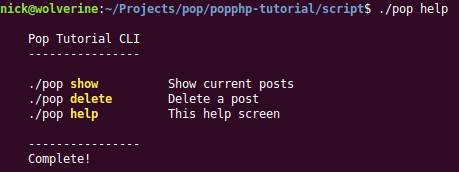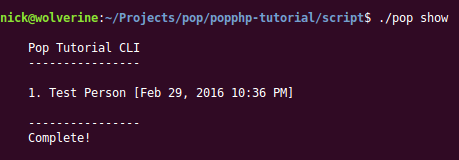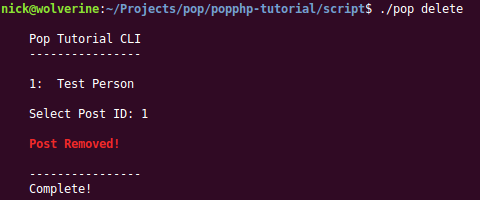Working with the Console App¶
The CLI side of the application is set up to demonstrate how one would program and interact with an application via the console. From a user perspective, running the following commands will trigger certain actions.
To show the help screen:
script/pop help

To show the current posts:
script/pop show

To delete a post:
script/pop delete

Script File¶
A closer look at the application code in the main script/pop file and you’ll see:
#!/usr/bin/php
<?php
// Require autoloader
$autoloader = include __DIR__ . '/../vendor/autoload.php';
// Create main app object, register the app module and run the app
$app = new Pop\Application($autoloader, include __DIR__ . '/../app/config/app.cli.php');
$app->register(new Tutorial\Module());
$app->run();
In the above file, the shell environment is set to PHP. Like the web index file, this script file
loads the autoloader, and the new application object is created, passing the console application
configuration file into the application object. From there, the run() method is called and the
console application is routed and on its way.
If you take a look at the app/config/app.cli.php file, you’ll see the console routes,
as well as the database service, are defined in the file. The routes are automatically passed and wired
up to a router object and the main application object sets the database object that is to be used from the
service.
ConsoleController¶
Looking at the main ConsoleController class in the app/src/Controller/ folder, you will see the
various method actions that serve as the route end points. Within the constructor of the controller,
a few object properties are wired up that will be needed, such at the console object and the help
command. Within the help method, you can see a basic call to display the help text in the console.
The show method accesses the model to retrieve the data to display the posts in the console. The
delete method handles a more complex transaction, triggering a prompt for the user to enter the
selected post ID to delete.